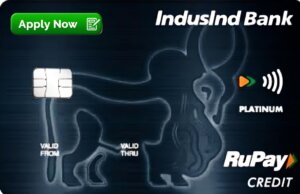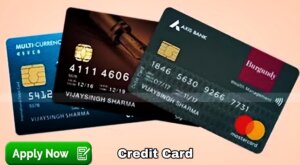
Using credit cards strategically is essential for maintaining a healthy financial life. But what happens when your financial obligations exceed your available cash? A common question arises: Can you pay a credit card with another credit card? The answer isn’t as straightforward as a simple yes or no. There are methods to indirectly achieve this, but understanding the mechanics, benefits, risks, and limitations is crucial.
In this comprehensive article, we’ll explore the different ways you can use one credit card to pay another, the strategies involved, potential risks, and when it might be a good (or bad) idea.
Understanding How Credit Card Payments Work
Before diving into the methods of paying one credit card with another, it helps to understand how credit card payments are structured.
When you use a credit card, you’re essentially borrowing money from the issuer. Each month, you’re required to pay at least a minimum amount on the balance. Payments are typically made from a bank account or debit card. Credit card companies expect this money to come from your existing funds, not from another borrowed source.
Directly paying one credit card with another is generally not allowed by card issuers, largely because it would enable a cycle of debt with no actual repayment, only shifting balances from one card to another. However, there are workarounds that effectively achieve the same result—let’s explore those.
Can You Directly Pay a Credit Card With Another Credit Card?
The Short Answer: No
You cannot log into one credit card account and use another credit card as the payment method. Credit card networks and issuers don’t allow one credit card to be listed as a funding source for another. For example, you can’t go into your Chase credit card portal and set your Capital One card as the payment source.
But while direct payments from one card to another are not permitted, there are several indirect methods to achieve the same goal.
Indirect Ways to Pay a Credit Card With Another Credit Card
1. Balance Transfers
A balance transfer is the most common method used to “pay” a credit card with another credit card.
How It Works:
A balance transfer involves moving a balance from one credit card to another, typically to take advantage of a lower interest rate. Many cards offer introductory 0% APR on balance transfers for a certain period (often 6–18 months).
Example:
Let’s say you owe $5,000 on Card A with a 20% APR. You open a new credit card (Card B) that offers a 0% APR on balance transfers for 15 months with a 3% fee. You transfer the $5,000 balance from Card A to Card B, effectively using Card B to pay off Card A.
Pros:
-
Can save you money on interest.
-
Helps consolidate debt.
-
May simplify your finances by reducing the number of payments.
Cons:
-
Balance transfer fees (typically 3–5%).
-
Credit limit on the new card may not be high enough.
-
If not paid off in time, the interest can spike.
-
Requires good credit to qualify.
2. Cash Advances
Cash advances allow you to withdraw cash using your credit card and use it to pay another card.
How It Works:
You use one credit card (Card A) to withdraw cash—either at an ATM or by requesting a cash advance check. Then you use that cash to pay the balance on another credit card (Card B).
Pros:
-
Immediate liquidity.
-
Doesn’t require opening a new card.
Cons:
-
High fees and interest rates (often starting immediately).
-
Usually no grace period for cash advances.
-
Can damage your credit score due to high utilization.
-
Limited to your cash advance limit, which is often lower than your credit limit.
Because of the high costs, this is usually not recommended unless it’s an emergency.
3. Using a Payment App as a Bridge
Some people try to use payment apps like Venmo, PayPal, or Plastiq to pay off a credit card using another card. These platforms allow you to send money using a credit card.
Example:
You might send money to a trusted friend using Venmo or PayPal funded by your credit card. That friend then sends you the cash back, which you use to pay off another credit card. Alternatively, services like Plastiq let you pay bills, including credit card bills, with a credit card—for a fee.
Pros:
-
Useful in limited situations.
-
Can help earn rewards or meet minimum spend requirements.
Cons:
-
These platforms may flag transactions as cash advances.
-
Fees range from 2.5% to 3%.
-
Risk of violating terms of service.
-
Not sustainable for long-term debt management.
4. Credit Card Convenience Checks
Credit card issuers sometimes send “convenience checks” to cardholders, which can be used like personal checks.
How It Works:
These checks draw from your credit card’s available credit and can be written to pay any recipient—including your other credit card.
Pros:
-
Can be used to pay any creditor.
-
Easy to use like a normal check.
Cons:
-
Often treated like cash advances with high interest.
-
May come with fees.
-
Can lead to further debt if not repaid quickly.
When Might It Be a Good Idea?
While using one credit card to pay another isn’t ideal, there are some scenarios where it might make financial sense.
Consolidating Debt With 0% Balance Transfer Offers
If you’re juggling high-interest credit card balances, transferring them to a card with a 0% introductory APR could save you hundreds—or even thousands—of dollars in interest, provided you pay off the balance before the promotional period ends.
Temporary Cash Flow Issues
If you’re confident in your ability to repay a balance quickly, and you need temporary liquidity, a cash advance or convenience check might be an option. But this should be a last resort, not a go-to strategy.
When It’s a Bad Idea
You’re Just Shuffling Debt
If you’re moving balances around just to avoid making payments or delay the inevitable, you’re only prolonging the problem. This can quickly snowball into a larger debt trap.
You Can’t Afford the Fees or Interest
Cash advances, third-party services, and convenience checks all come with fees and high interest rates. If your goal is to save money or reduce debt, these strategies may backfire.
Your Credit Score Could Suffer
Using a significant portion of your credit limit—or missing payments—can hurt your credit score. Every time you apply for a new credit card, you incur a hard inquiry, which can slightly lower your score temporarily.

Credit Score Implications
Credit cards and their usage play a significant role in your credit score. Here’s how paying one credit card with another might affect it:
-
Credit Utilization: High balances increase your utilization ratio, which can lower your score.
-
Hard Inquiries: Opening a new card for a balance transfer causes a hard pull on your credit.
-
Payment History: Successfully managing a balance transfer and making on-time payments can improve your score over time.
-
Length of Credit History: Opening new cards can reduce your average account age, which may lower your score slightly.
Alternatives to Using a Credit Card to Pay Another Credit Card
If you’re finding it difficult to keep up with payments, consider these alternatives:
1. Personal Loans
Debt consolidation loans can offer lower interest rates and fixed payments. These loans allow you to pay off your credit cards and pay a single installment over a defined period.
2. Debt Management Plans
Offered by credit counseling agencies, these plans help you create a strategy to repay your debts. In some cases, counselors can negotiate lower interest rates with your creditors.
3. Home Equity Loan or HELOC
Homeowners may consider using home equity to consolidate credit card debt at a lower interest rate. This is risky, however, because it involves your property as collateral.
4. Peer-to-Peer Lending
Some platforms offer peer-to-peer lending where individuals borrow from investors instead of financial institutions. These loans can offer competitive rates depending on your creditworthiness.

Tips for Managing Credit Card Debt Responsibly
-
Create a Budget: Track your income and expenses to understand where your money is going.
-
Pay More Than the Minimum: This reduces your balance faster and saves you interest.
-
Automate Payments: Prevent late fees and protect your credit score.
-
Avoid New Debt: Stop using credit cards while you’re trying to pay them off.
-
Monitor Your Credit Report: Keep an eye on your credit score and dispute any errors.

Final Thoughts
While you technically cannot pay a credit card directly with another credit card, there are several indirect ways to accomplish a similar outcome. The most common and cost-effective method is a balance transfer, especially when used strategically to take advantage of low or 0% interest offers. Other options like cash advances, convenience checks, and third-party payment services come with higher risks and fees.
That said, these methods should be used carefully and with a clear repayment strategy in place. Otherwise, the risk of accumulating more debt increases significantly.
Ultimately, credit cards should be tools for financial flexibility—not instruments for cycling debt indefinitely. If you’re struggling, it’s wise to seek help from a financial advisor or credit counselor. Managing debt isn’t just about paying it off—it’s about building healthier habits and long-term financial stability.